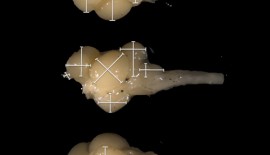Researcher
Categories
2009Abstract
The basis for our knowledge of brain evolution in vertebrates rests heavily on empirical evidence from comparative studies at the species level. However, little is still known about the natural levels of variation and the evolutionary causes of differences in brain size and brain structure within-species, even though selection at this level is an important initial generator of macroevo- lutionary patterns across species. Here, we examine how early life-history decisions and sex are related to brain size and brain structure in wild populations using the existing natural variation in mating strategies among wild brown trout (Salmo trutta). By comparing the brains of precocious fish that remain in the river and sexually mature at a small size with those of migratory fish that migrate to the sea and sexually mature at a much larger size, we show, for the first time in any vertebrate, strong differences in relative brain size and brain structure across mating strategies. Precocious fish have larger brain size (when controlling for body size) but migratory fish have a larger cerebellum, the structure in charge of motor coordination. Moreover, we demonstrate sex-specific differences in brain structure as female precocious fish have a larger brain than male precocious fish while males of both strategies have a larger telencephalon, the cognitive control centre, than females. The differences in brain size and structure across mating strategies and sexes thus suggest the possibility for fine scale adaptive evolution of the vertebrate brain in relation to different life histories.
Kolm, N., Gonzalez-Voyer, A., Brelin, D. and Winberg, S. 2009. Evidence for small scale variation in the vertebrate brain: mating strategy and sex affect brain size and structure in wild brown trout (Salmo trutta). Journal of Evolutionary Biology. 22: 2524-2531.







